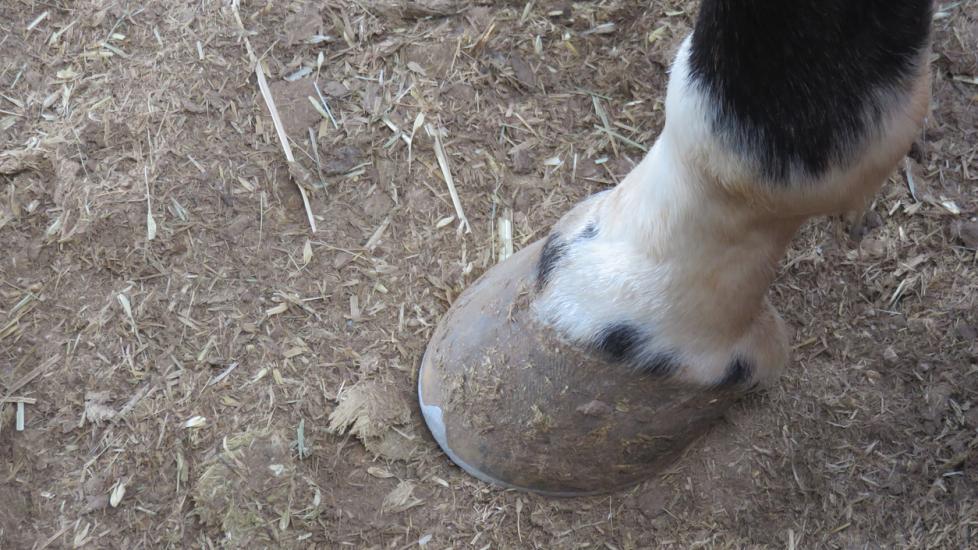Buttress Foot in Horses
What Is Buttress Foot in Horses?
Buttress foot, also called pyramidal disease, is a term that describes a specific change in the appearance of a horse’s foot. Buttress is when the dorsal or frontmost aspect of the coronary band and top portion of the hoof start to bulge outward. This change in appearance of the foot means more serious changes within the hoof capsule. Thankfully, it is an uncommon condition and occurs only under specific circumstances.
Symptoms of Buttress Foot in Horses
-
Swelling at the dorsal aspect of the coronary band and hoof wall
-
Offloading the affected foot when standing
Over time, if not properly treated, the hoof wall and coronary band will continue to bulge causing increased pain for the horse.
Causes of Buttress Foot in Horses
Buttress foot is caused by new bone formation on the topmost part of the coffin bone, known as the extensor process, or the lowest part (distal end) of the pastern bone. This new bone formation can occur for a few different reasons:
-
Fracture of the coffin bone or outer portion of the pastern (usually secondary to trauma)
-
Severe osteoarthritis
-
Chronic or historic soft tissue injury of the extensor tendon of the limb
How Veterinarians Diagnose Buttress Foot in Horses
Diagnosis of any orthopedic condition starts with a thorough physical and lameness exam performed by a veterinarian. The vet will feel the limb looking for any heat, swelling, or sensitivity. Motion exams, flexion tests, and nerve blocks help determine the specific location of the lameness within the limb.
Once they have determined the pain is coming from the region of the foot/pastern, the next step is radiographs. Radiographs will often show the bony changes to the pastern and coffin bone that are characteristic of buttress foot. Additionally, an ultrasound may be beneficial to determine if a tendon is involved.
Treatment of Buttress Foot in Horses
Due to the chronic nature of most underlying causes of buttress foot, treatment focuses on relieving pain and maintaining the horse’s comfort as long as possible. Your veterinarian may prescribe medications such as phenylbutazone or Banamine® to help alleviate pain and inflammation. Corrective shoeing may also be recommended to decrease the amount of pressure on the foot and prevent further deformation of the hoof. In severe cases, it may be necessary to surgically remove fractured fragments as they can shift and cause continuous irritation to the joint.
Recovery and Management of Buttress Foot in Horses
Managing a horse with buttress foot will depend on the initial cause (fracture, arthritis, or injury). Most horses will require pain medications in the form of NSAIDs (phenylbutazone, Banamine, firocoxib). Supportive shoeing will also play an important role in keeping these horses comfortable as long as possible.
For most, limiting exercise will be required. Buttress foot is often a career-ending diagnosis in the later stages of the condition. In severe cases, these horses can develop arthritis, laminitis, and other conditions that can lead to additional pain and discomfort.
Prevention of Buttress Foot in Horses
Since most cases of buttress foot occur due to fracture of the coffin bone, it is not entirely avoidable. Good hoof maintenance through regular trimming and shoeing as well as regular exercise and conditioning can help to support and strengthen the structures within the foot.
